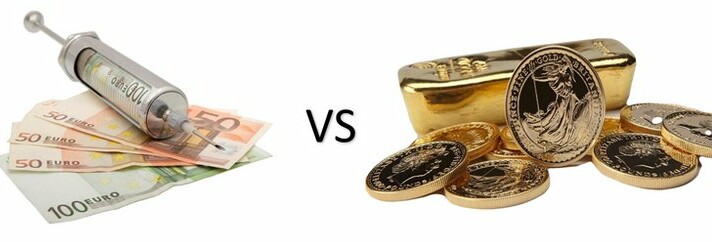Aristotle defined money in terms of three functions: unit of account, store of value and intermediary in trade.
I - What is money?
Exchange intermediary : Exchange function via money, unlike barter.
Value reserve : Purchasing power reserve function over time.
Unit of account : Function as an instrument for measuring value, for economic calculation or accounting.
This old definition persists, and perhaps needs to be rectified, because our fiat currencies (euros, dollars) with all their references to precious materials have been abolished. That is, because of the infinite characteristic of the quantity of our printable fiat currencies.
Other definitions can be proposed, notably those of Pierre Noizat: << A currency is a technology that enables us to spend tomorrow what we have today. >> or << A currency is a system for exchanging stocks and flows of energy in the form of physical or mathematical tokens. >>.
For example, when we receive a salary, it corresponds to the energy devoted to work. Money enables us to safeguard this reserve of energy, which we can spend in the future to obtain an equivalent quantity of work.
II - Value currencies
In the case of value currencies such as bitcoin and gold, each transfer of value is associated with a verifiable quantity of energy. Miners expend energy to extract a gram of gold, and the same principle applies to the bitcoin network.
It could be said that Bitcoin, like gold, verifiably transfers past energy - the energy used to produce the coin - into the present of a transaction.
Generally speaking, value currencies are inelastic, because the underlying asset (gold, Bitcoin, real estate, etc.) cannot be quickly and arbitrarily adjusted to meet a change in demand. Unlike debt currencies.
III - Debt currencies
In the case of debt currencies (euros, dollars), the link between monetary value and the energy exchanged is established by law, not by mathematics (Bitcoin) or physics (gold).
To put it simply, when a central bank (Definition: a public institution that manages the currency of a country or group of countries and controls the money supply, i.e. the quantity of money in circulation) prints a dollar, it costs it no energy (or only a negligible amount), unlike miners who extract gold using energy and "sweat".
By distributing money creation primarily to banks and holders of financial assets rather than to players in the real economy, central banks distort price formation and access to economic opportunities.
What's more, this increase in the quantity of currency issued creates a devaluation of debt currencies such as the euro or the dollar already in circulation.
To keep things simple, here's a graph showing the purchasing power of a dollar from 1913 to 2008:

We can see that in almost 100 years, the purchasing power of a dollar has decreased by 95 %. In other words, the purchasing power of a single dollar in 1913 corresponds to the purchasing power of a 20 $ bill in 2008. This model also works for the euro.
Now let's compare the purchasing power of gold over time, from the year 0 to 2020: In year 0, a cow cost around 31 grams of gold.
Today, 31 grams of gold are worth around 1,500 euros. The average price of a cow today is around 1,500 euros. So 31 grams of gold still have the same purchasing power after 2000 years, or about one cow.
The difference in purchasing power between a debt currency and a value currency over time is considerable. To preserve your assets over time, you need to own value currencies rather than debt currencies.
It's better to use debt currencies for these everyday expenses, and to use value currencies to preserve your assets.
IV - Debt-currency hyperinflation
During exceptional crises such as the 1987 crash, the 2001-2002 stock market crash (bursting of the dot-com bubble) and the 2008 subprime crisis, central banks implemented strategies to print massive amounts of debt currency. No energy or labor is required to print these new bills, so the solution is very easy.
The massive increase in the number of new banknotes (euros, dollars, etc.), largely in the equity markets, creates currency inflation, and in extreme cases hyperinflation, as in Germany in 1923, Venezuela in 2013 and the Turkish lira even today.

This hyperinflation creates a rapid and brutal devaluation of the currency, destroying confidence in it. All assets overexposed to a hyperinflationary currency see their purchasing power literally collapse within a few months/years.
Here's a chart of the FED's money printing since 1980:

Following the Covid-19 crisis, over 20 % of US dollars in circulation were printed in 2020. We're in the same situation in Europe with the Euro.
Central banks in the USA and Europe are pursuing the same strategies as central banks in Germany in the 1920s, and more recently in Venezuela and Turkey.
Our central banks have no choice but to continue the vicious circle of printing debt currencies, but this is only a short-term solution. Let's not forget that the euro is just a 20-year experiment.
As Albert Einstein said: " Insanity is doing the same thing over and over again and expecting a different result. ".
Tristan
